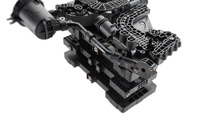Plastics & Rubber
Fuel cell
Which automotive drive system will become dominant in future? How can we achieve further reductions in energy consumption and emissions through new and improved powertrain concepts for cars? Alongside the continued development of cars with more efficient internal combustion engines, chemistry is making an important contribution to a number of different electric drive concepts. Further progress is also being made in the field of fuel cells. In conjunction with Joma-Polytec GmbH and Mercedes-Benz Fuel Cell GmbH, a subsidiary of Daimler AG, a fuel cell development project was initiated. Its aim: to find an optimal solution satisfying the extensive range of requirements including thermal stability, media resistance, and durability. In view of the unique material structure, and on the basis of intensive material analyses of the chemical and mechanical resistance, the partners ultimately decided on the tailor-made Ultramid® grades A3WG10 CR and A3EG7 EQ. Following successful testing of all components, the two glass fiber-reinforced Ultramid® grades are now being used as standard to manufacture the anode- and cathode-end plate in fuel cells. Ultramid® A3EG7 EQ is an ideal material, given the exceptional purity requirements associated with sensitive applications in the electronics industry. In the case of the media distribution plate and the water separator unit, which is exposed to a wide variety of media through the cooling water, air and hydrogen channel, this Ultramid® grade offers excellent resistance, while at the same time meeting all requirements regarding the purity of the material.
